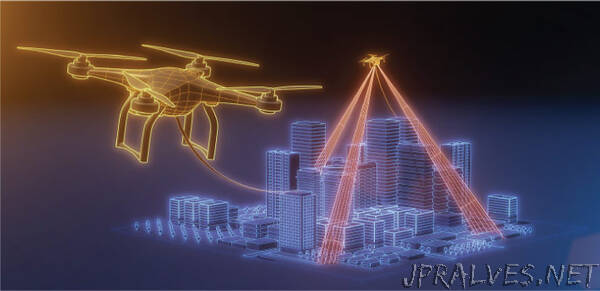
“Flying drones connected by a cable tethered to a ground station could be a flexible solution for enhancing wireless connectivity in temporary hotspots.
Keeping up with wireless demand is a never-ending endeavor for data providers, who often contend with temporary high-usage hotspots that might be underserviced by the fixed-base station network. Tethered drones could provide a flexible and low-cost solution for temporarily increasing wireless capacity when and where it’s needed.
“Transient hotspots of heavy data traffic can occur at events such as sporting matches, concerts, conferences and exhibitions,” says Osama Bushnaq, a former Ph.D. student at KAUST. “However, the high cost of deploying fixed terrestrial base stations to serve such occasional or periodic events may not be warranted. In such circumstances, drones could hover over the hotspot to provide ground users with better connectivity. The question for us was whether tethered or untethered drones would be better.”
Drones are potentially very good wireless base stations because they can be placed close above the usage hotspot and offer clear line-of-sight and optimal connectivity. On their own, however, they have limited battery duration and would rely on a good wireless link to a fixed ground station to provide the bandwidth needed to service the hotspot.
“To overcome these challenges, the drone can be connected to a cable or tether that provides an unlimited power supply and a high-capacity link to the core network,” says Bushnaq. “The tethered drone’s mobility is, however, restricted by the tether length and the ground station’s location. Given these advantages and shortcomings of tethered and untethered drones, we conducted a comparative analysis using a statistical coverage method and optimization of drone location.”
Bushnaq and his colleagues, including professors Tareq Al-Naffouri and Mohamed-Slim Alouini, derived the statistical coverage probability for a user at a random location in the hotspot using a novel stochastic geometry method to account for the relative positioning of the user, drone and terrestrial base station.
“This analysis in itself is very useful for several situations, such as ad hoc networks and machine-to-machine communications,” says Bushnaq.
The researchers also derived a mathematic proof for the optimal drone location that provides maximum coverage for users within the hotspot and conducted extensive numerical simulations that showed the tethered drone system to outperform untethered drones in practical situations.
“In practice, the drone might fly to the nearest ground tether station to a hotspot, connect itself to the tether and hover at the optimal position for as long as needed,” says Bushnaq. “The drone would then detach itself and fly to another ground tether station to serve another hotspot.”
Al-Naffouri’s group is also exploring other applications for tethered drones. “They could be used to accurately detect hostile drones, where pinpointing targets precisely is critical, especially around highly sensitive or secure locations,” Al-Naffouri says”
